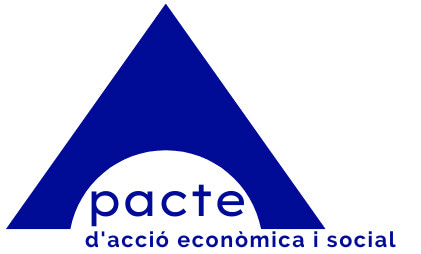It allows you to see exactly what each of your individual programs is costing, whether you have the resources available to effectively run the program and determine if the program is sustainable. The first ‘what’,fund accounting, allows a nonprofit to match their sources of revenue with its designation. This provides a method of measuring if a nonprofit has the resources available to meet their mission-based goals.
Financial Sustainability Planning: Looking Beyond the Annual Budget
Use purchase cards or a system that creates credit card feeds directly into your expense management. Automatically allocate your expenses to the appropriate funds and programs based on predefined rules and criteria. accounting services for nonprofit organizations When your organization has strong financial management processes, you will have a clear understanding of how your money is spent and how your expenses align with your mission and strategy.
- Identify the key areas that support your organization's objectives, such as program delivery, fundraising, staff development, or community outreach.
- Aside from the risk of mistakes, manging your financial information in this way also raises concerns about data security.
- These templates are specially designed to cater to the unique needs of nonprofits, allowing for detailed income and expenditure projections.
- Consider creating multiple scenarios - optimistic, realistic, and conservative - to prepare for different financial situations.
- Now, take the first step and begin crafting a nonprofit budget that reflects the compassionate and purpose-driven spirit of your organization.
- However, in order to continuously create a larger impact on the mission, nonprofits must support themselves and grow, which requires an investment in overhead expenses.
Expense Management Strategies to Maximize Your Mission Impact
Short-term goals should be realistic and achievable, and should provide a tangible timeline for success. These can include financial targets, such as raising a certain amount of money, as well as other goals that aren’t necessarily related to money, such as launching a new program or expanding services. Nonprofits should explore various avenues for funding, including grants, individual donations, corporate sponsorships, and earned income strategies.
- Relying on a single funding source, such as government grants or a major donor, can be risky.
- If one donor withdraws support, the organization may struggle to fill the gap.
- And different groups have different resources available that might be shared.
- They face many external and internal threats to their financial health.
- Across all areas of your nonprofit’s operations, it’s important to maintain consistency in data entry and practice good data hygiene.
- Breaking down expenses enables precise allocation for your program needs and operational costs.
A Beginner's Guide to Nonprofit Financial Reporting
By making reserve-building part of funding strategies for non-profits, you can turn short-term gains into lasting strength. Regularly review your reserve policies to keep up with changing needs and risks. Make sure grant budgets match your operating budget to show fiscal responsibility. AI tools like ProFundraising help analyze data for better budget proposals. Being transparent builds trust with funders and strengthens partnerships. A youth mentorship group chose between hiring more staff or giving deeper support.
The key is identifying your revenue streams and making realistic estimates for each. This helps you plan better and avoid financial surprises down the road. Your budget should align with your nonprofit's mission and goals to ensure your revenue and spending are consistent with your core purpose. This alignment helps avoid wasting money on activities that won't advance your mission. Here is what you need to know to strengthen your financial savvy and keep your nonprofit on a strong financial foundation.
Grants to benefit the People of Kauai in Hawaii
Our integrated approach empowers organizations to connect deeply with their audiences, expand their reach, and achieve measurable results—all without stretching their resources. For example, your goal for 2025 can be to increase fundraising revenue by 20% to support a new educational outreach program. Generally, your bookkeeper will be the one to collect relevant financial information for your nonprofit. According to Jitasa’s nonprofit bookkeeper article, this is the person who will be inputting data, recording one side of transactions, processing payroll, and allocating costs. Overhead is frequently discussed and disagreed upon as a topic in the nonprofit sector.
Projected Cash Flow
Treat this “rule” as a guideline to find ways to reduce overhead costs within reason and https://holycitysinner.com/top-benefits-of-accounting-services-for-nonprofit-organizati/ allocate your resources wisely toward mission-related activities. You might also have heard the term “overhead expenses,” which refers to your nonprofit’s administrative and fundraising costs combined. Overhead isn’t inherently bad—some of these expenses are essential for your organization to thrive. However, your goal should be to put as much of your funding toward your mission as possible.
They will set downtime policies in place that ensure that your nonprofit’s funds are safe and being spent responsibly. For nonprofit organizations, an income statement is also referred to as a statement of activities. It outlines the nonprofit’s net income, revenues, and expenses over a specific period, typically monthly, quarterly, or annually. Every nonprofit should maintain an operating reserve—funds set aside to cover unexpected expenses or revenue shortfalls. These reserves provide a financial cushion that can help your organization weather challenges without disrupting essential programs. Whether you’re new to financial planning or you’re a seasoned planner, it can help immensely to have a professional guiding your way during the process.
How to Craft Your Organization's Financial Story
So, create a comprehensive financial projection to navigate your nonprofit organization’s financial management and decision-making approaches. Even though nonprofit organizations run with a different intention than for-profit businesses, they still need to manage their finances effectively. For your nonprofit venture, you may consider budgeting for both fixed and variable costs that will help you ensure your nonprofit’s financial stability and effective resource allocation. This analysis helps you explore new growth opportunities in your community, areas that need your help, or perhaps you’ve spotted a gap in the existing service providers. Also, it helps you identify who will support your nonprofit’s mission and contribute to its success. Remember, nonprofit organizations do not run for money or profit; still, they must be properly organized to get support or make a meaningful impact on society.






